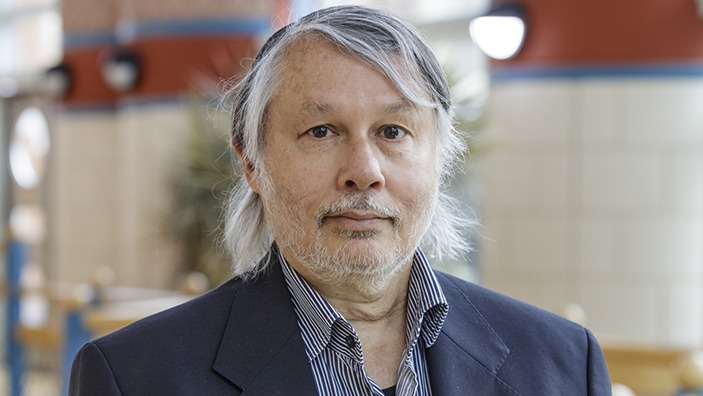
Innovative performance is critical for organisations aiming to stay competitive in today’s volatile environment. Previous studies have determined that creative members are “an essential component of team innovative performance and that they exert considerable influence over their teammates, particularly through their input of novel and useful insights”.
Following this logic, the assumption has long been that more creative people in teams should lead to a higher level of team innovative performance. But is this really the case?
A study co-authored by Prithviraj Chattopadhyay, Professor of Organisational Behaviour at Cambridge Judge Business School, finds that this assumption is far too simplistic and often wrong.
Balancing creativity in R&D teams: how many people are optimal for innovation?
The research published in the journal Human Performance examines research and development (R&D) teams in South Korea to look at the relation between the proportion of creative members in R&D teams and innovative performance of these teams as measured by patents.
The study concludes that there is an “inverted U-shaped relationship” between the proportion of creative members in a team and the team’s innovativeness, because too great a proportion of creative people can lead to conflict and neglect of team maintenance functions.
“Our data showed that as the proportion of creative members in an R&D team rose, its relationship with the team’s number of patents was initially positive and increasing, but as the proportion continued to increase its influence on the team’s patents became decreasingly positive, and beyond a certain point its influence became negative,” the study finds.
Teams “will exhibit greater innovative performance when their proportion of creative members is at an intermediate level than when it is at a low level or a high level”.
The research is based on an examination of 120 R&D teams, representing different firms, with an average team size of 17 people. The research is based on 2005-2007 data through the Human Capital Corporate Panel (HCCP) dataset, collected by the Korea Research Institute of Vocational Education & Training, in combination with patent registration data from the Korean Intellectual Property Office (KIPO).
[Teams] will exhibit greater innovative performance when their proportion of creative members is at an intermediate level than when it is at a low level or a high level.
Creativity and team conflict
Previous studies on team composition suggest that teams work best when they have members who are experts in their field and whose ideas provide direction, as well as people in supportive roles such as administration and process co-ordination. If the team has a higher proportion of members in creative roles it might increase team conflict as they fight over limited resources within the team, including teammates who might help to implement their ideas and carry out administrative duties. Greater proportions of support staff can lead to smoother functioning and less conflict. The right balance is critical.
“Attributes of creative personnel, such as a tendency to break rules, and to use broadly defined concepts rather than narrowly defined ones, which may therefore be open to misinterpretation, may worsen intrateam co-ordination and increase team conflict,” the paper says. “On the other hand, including members who, while having high levels of expertise, are less creative but better at understanding the rules of the organisation and in building consensus, may help to implement creative ideas.”
HR practices to support creativity
Human resource management practices can help support a team’s creativity by providing resources such as participative management and pay dispersion, but this needs to be done carefully, the paper says.
Participative management focuses on providing team members with greater autonomy in completing their tasks, “so as to provide intrinsic rewards for engaging in challenging work such as innovation.” Usually, teams adopt participative management with the aim to empower staff to work co-operatively and enhance team outcome.
Pay dispersion “reflects the extent to which teams provide (individual) members extrinsic rewards for their creative work”, as previous studies have found that pay dispersion is critical to increase staff motivation and encourage collaboration.
The paper found that the proportion of creative members has a linear impact on team patent generation when participative management is low. In this situation, team members do not interact as much with one another and do not function as a team, so the team creative output is the simple aggregation of individual member output.
A similar relationship is found when pay dispersion is low as individual members are competing less with one another for pay. Counterintuitively, the inverted U shape between proportion of creative team members and number of patents is observed when participation is encouraged as this exacerbates conflict among creative members. This curvilinear relationship is also observed when pay dispersion is high and individual members compete for higher pay.
Assessing staff creativity
The authors describe a creative team member as one who is “able to outperform other members in providing and implementing new and useful ideas that consistently contribute to team innovation.”
The measure of creativity mainly relies on a supervisor’s perception of one’s creativity, as supervisors are responsible for team performance and are well positioned to evaluate creative contributions.
Additionally, supervisors working in R&D teams have extensive experience with the type of work their team is doing and “possess the domain-specific knowledge required to accurately judge whether their team members’ ideas are new and useful”.
In the Human Capital Corporate Panel data set used in the study, supervisors assessed R&D team members’ job performance compatibility for team creativity based on different ways employees operate:
- Creator: a person capable of creative and innovative job performance
- Trainer: a team member able to teach others but not to work on things creative
- Highly independent performer: someone who is very independent in performing duties and capable of doing what they are supposed to do within the job requirement
- Independent performer: a team member who is independent in performing duties
- Dependent performer: someone who relies on others for guidance in performing duties
Strategic HR approaches to boost team innovation
The study suggests that R&D teams should have “an optimal proportion of creative members rather than a maximal one” in order to achieve maximum levels of collective innovation.
The results of combining HR initiatives like pay dispersion and participative management with team composition are not straightforward. The authors therefore recommend that managers think “carefully about the combination of initiatives they undertake to boost innovation, instead of blindly following the dictum that more initiatives undertaken to boost creativity is always better.”
Specifically, managers should pay attention when promoting participative management and pay dispersion to enhance team performance. While these tools are useful, “both can undermine team performance when creators are in conflict over resources for their creative work.”
Featured research
Jeong, I., Chattopadhyay, P., Shin, S.J. and Park, O. (2024) “When less is more: the proportion of creative members and R&D team innovative performance.” Human Performance, 37(4): 163-183 (DOI: 10.1080/08959285.2024.2366222)





